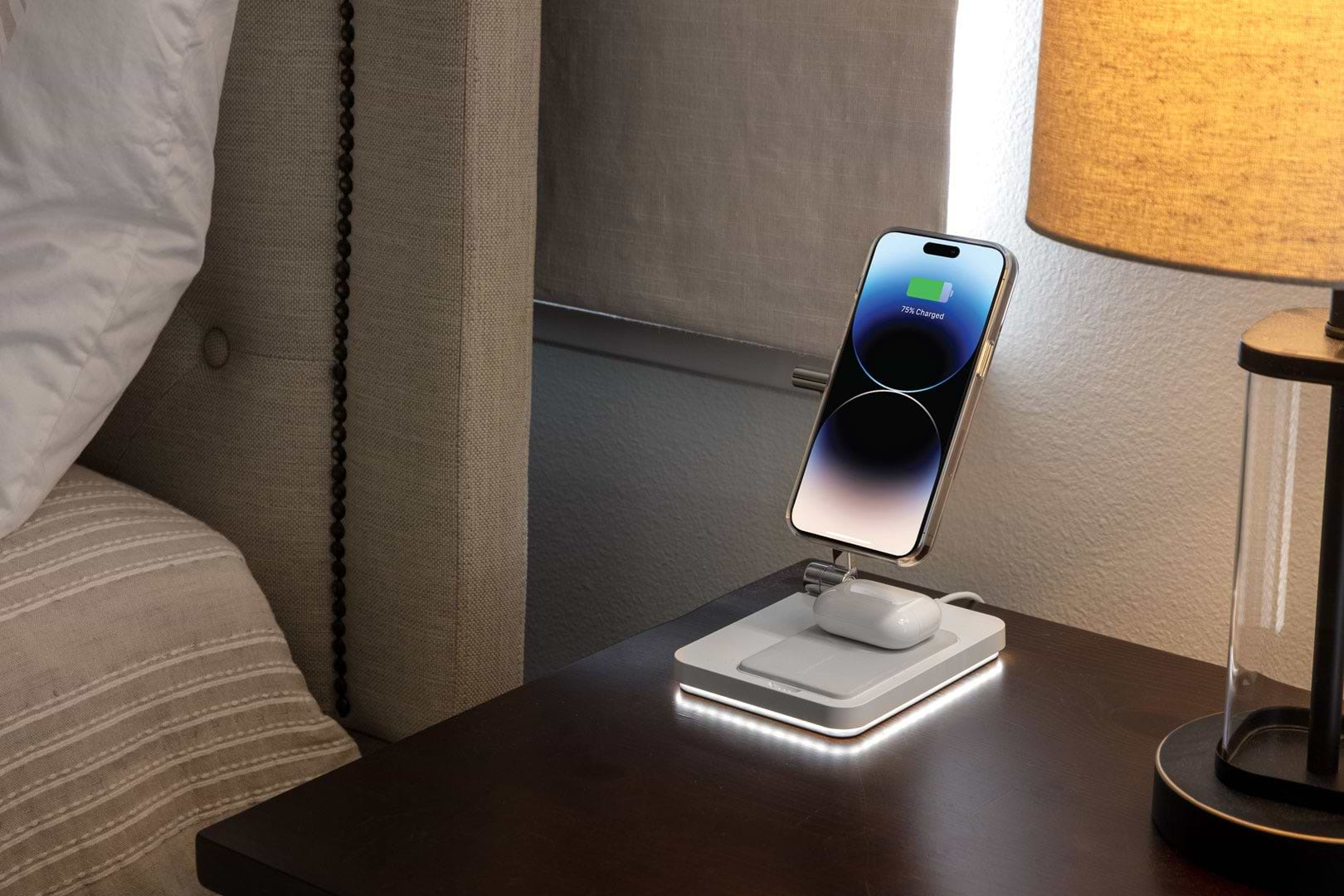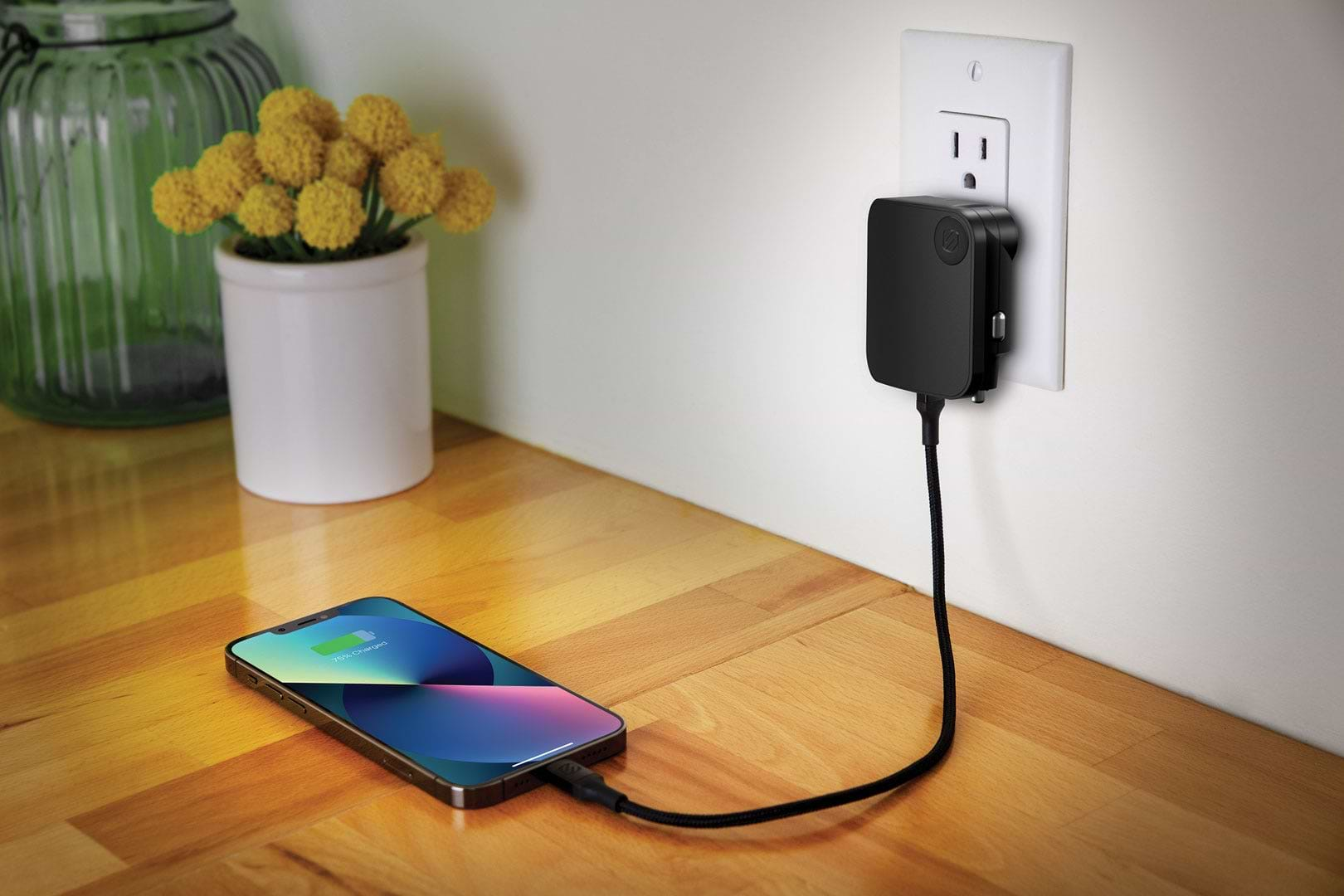Investigating Phone Heating Issues During Charging

As smartphones have become an indispensable part of our lives, the issue of phone heating during charging has become a cause for concern. While it is natural for phones to generate some heat during the charging process, excessive heating can lead to various problems, including reduced battery life, performance issues, and even safety risks.
In this article, we will get into the causes of phone heating during charging, explore the potential risks associated with overheating phones, discuss preventive measures, and provide troubleshooting tips to effectively manage this issue.
Understanding the Basics of Phone Charging
Before delving into the factors that contribute to phone heating during charging, it is important to understand the fundamentals of phone charging. When you connect your phone to a charger, an electrical current flows from the charger to the phone's battery, replenishing its energy. The charging process involves different stages, including the initial rapid charging phase and the subsequent trickle charging phase to maintain battery capacity.
The Science Behind Phone Charging
Phone charging is facilitated by a complex interplay of electrical currents, voltage regulation, and circuitry. The charger converts the AC (alternating current) from the power outlet into DC (direct current) to charge the phone's battery. This conversion process generates some heat, which is dissipated through the charger.
However, the science behind phone charging goes beyond the basic conversion of currents. Modern smartphones are equipped with advanced charging technologies that optimize the charging process. These technologies include fast charging, which allows for quicker replenishment of battery energy, and intelligent charging algorithms that monitor and adjust the charging rate to prevent overcharging and overheating.
Furthermore, the charging circuitry within the phone plays a crucial role in regulating the charging process. It ensures that the electrical current is distributed evenly throughout the battery cells, preventing any imbalances that could lead to overheating or reduced battery life. The circuitry also incorporates safety mechanisms, such as overcurrent protection and temperature sensors, to safeguard against potential hazards.


Common Misconceptions About Phone Charging
There are several misconceptions surrounding phone charging and its relation to heating issues. One common misconception is that using your phone while charging causes it to heat up excessively. While phone usage can contribute to heat generation, it is not the sole factor responsible for heating issues. Other underlying causes need to be considered.
One such cause is the type of charger being used. Not all chargers are created equal, and using a low-quality or counterfeit charger can lead to inefficient charging and increased heat generation. It is important to use chargers that are specifically designed for your phone model and have undergone rigorous safety testing.
Additionally, environmental factors can also impact the temperature of your phone during charging. High ambient temperatures, such as leaving your phone under direct sunlight or in a hot car, can cause the phone to heat up more than usual. Similarly, charging your phone in a poorly ventilated area or on a surface that traps heat, like a bed or pillow, can contribute to overheating.
Another misconception is that charging your phone overnight damages the battery. While it is true that overcharging can degrade battery health over time, modern smartphones are equipped with mechanisms to prevent overcharging. Once the battery reaches its full capacity, the charging process automatically switches to a trickle charge, which maintains the battery's energy without causing any harm.
It is worth noting that occasional overheating during phone charging is normal to some extent. However, if your phone consistently gets excessively hot or exhibits other signs of battery or charging issues, it is advisable to consult the manufacturer or seek professional assistance to diagnose and resolve the problem.
Causes of Phone Heating During Charging
Battery Health and Phone Heating
Battery health plays a significant role in phone heating during charging. Over time, a battery's capacity decreases, and it may not hold a charge efficiently. This can lead to the battery being overworked during the charging process, resulting in excessive heat generation.
As batteries age, their internal resistance increases, causing them to heat up more during charging. This is because the battery's ability to convert electrical energy into chemical energy decreases, leading to a higher percentage of energy being dissipated as heat. Additionally, factors such as exposure to extreme temperatures and frequent deep discharge cycles can further degrade battery health, exacerbating the heating issue.
It is important to note that certain battery chemistries, such as lithium-ion, are more prone to heating issues compared to others. This is due to their higher energy density, which makes them more susceptible to thermal runaway if not properly managed.
Charger Type and Its Impact on Phone Heating
The type and quality of the charger used can also affect phone heating during charging. Cheap or counterfeit chargers may not regulate the current flow properly, leading to increased heat generation. These chargers often lack the necessary safety features and may deliver inconsistent power, putting additional stress on the battery and other components.
On the other hand, using the charger provided by the phone manufacturer is recommended to ensure compatibility and safety. These chargers are designed specifically for the phone model and undergo rigorous testing to meet safety standards. They incorporate advanced charging technologies, such as voltage regulation and temperature monitoring, to optimize charging efficiency and minimize heat generation.
Furthermore, the charging cable itself can also impact phone heating. A damaged or worn-out cable can result in increased resistance, leading to higher power loss and heat generation. It is essential to regularly inspect and replace charging cables to maintain optimal charging performance and prevent overheating.
Role of Phone Usage During Charging
While phone usage alone is not the primary cause of heating issues, certain activities such as playing graphics-intensive games or using power-hungry apps while charging can put additional strain on the phone's components, consequently contributing to increased heat generation.
When the phone is being used intensively, it requires more power from the battery, which in turn leads to higher current flow. This increased current flow can cause the phone's internal components, such as the processor and display, to work harder, generating more heat. Additionally, prolonged usage during charging can restrict airflow around the device, further exacerbating the heating issue.
It is advisable to avoid using power-intensive applications or games while charging, especially if the phone is already experiencing heating issues. Allowing the phone to charge without any additional load can help dissipate heat more effectively and prevent potential damage to the device.
In conclusion, several factors contribute to phone heating during charging. Battery health, charger type, and phone usage all play a significant role in determining the extent of heat generation. By understanding these causes and taking appropriate measures, such as using high-quality chargers and avoiding excessive phone usage during charging, users can mitigate heating issues and ensure the longevity of their devices.
Potential Risks of Overheating Phones
Overheating phones can lead to a range of risks, affecting both the device's performance and user safety. It is crucial to be aware of these risks to take appropriate measures to prevent them.
When a phone overheats, it can have a significant impact on its performance. Excessive heat can cause phones to slow down, freeze, or crash. Imagine being in the middle of an important phone call or trying to send a time-sensitive message, only to have your phone suddenly freeze or shut down due to overheating. It can be frustrating and inconvenient, especially if you rely heavily on your phone for work or personal matters.
Not only does overheating affect the phone's performance, but it can also have safety concerns. The risk of fire or explosion is a genuine concern when it comes to overheating phones. While such cases are rare, they emphasize the importance of addressing phone heating issues promptly to prevent any potential accidents.
One of the main causes of phone overheating is excessive usage. When we constantly use our phones for resource-intensive tasks such as gaming or streaming videos, it puts a strain on the device's processor and battery, leading to increased heat generation. Additionally, leaving your phone exposed to direct sunlight or placing it on surfaces that retain heat, like a car dashboard, can also contribute to overheating.
Another factor that can contribute to phone overheating is the use of poorly designed or faulty chargers. Using cheap or counterfeit chargers that do not meet safety standards can cause the phone's battery to overheat during charging, potentially leading to long-term damage to the device.
It is essential to take preventive measures to avoid overheating issues. One way to do this is by giving your phone regular breaks to cool down, especially during extended periods of heavy usage. You can also optimize your phone's settings by disabling unnecessary background processes or reducing screen brightness, which can help reduce heat generation.
Furthermore, it is crucial to invest in high-quality chargers and avoid using counterfeit ones. Genuine chargers are designed to regulate the charging process and prevent overheating, ensuring the safety and longevity of your phone.
Lastly, keeping your phone in a cool and well-ventilated environment can also help prevent overheating. Avoid exposing your phone to direct sunlight or leaving it in hot places like a closed car during summer months.
By being proactive and taking these preventive measures, you can minimize the risks associated with phone overheating and ensure optimal performance and safety for your device.
Preventing Phone Heating Issues
Best Practices for Charging Your Phone
To prevent excessive phone heating during charging, it is essential to follow some best practices. Avoid charging your phone on a soft surface such as a bed or pillow, as this can restrict airflow and trap heat. Instead, place it on a hard, cool, and well-ventilated surface while charging.
Choosing the Right Charger
Investing in a high-quality charger that is specifically designed for your phone model is crucial. The right charger will provide the appropriate current and voltage for efficient charging, minimizing heat generation. Avoid using cheap or counterfeit chargers, as they can be a safety hazard.
The Importance of Regular Phone Maintenance
Regular phone maintenance, such as cleaning the charging port and keeping the phone's software up to date, can contribute to optimal performance and prevent heating issues. Removing dust or debris from the charging port ensures a secure connection and uninterrupted power flow.
Troubleshooting Phone Heating Issues
Identifying Signs of Overheating
If you suspect that your phone is overheating during charging, there are certain signs to look out for. These include excessive warmth on the back of the phone, rapid battery drain, slow charging, or the phone shutting down unexpectedly. Monitoring these indicators can help identify and address heating issues promptly.
Steps to Cool Down Your Phone
If your phone is overheating, there are some steps you can take to cool it down. First, disconnect it from the charger and place it in a cool area away from direct sunlight. Additionally, remove any phone cases or covers that may be trapping heat. If necessary, gently wipe the phone with a soft cloth to remove any excess heat.
When to Seek Professional Help
If you have followed the recommended troubleshooting steps and your phone continues to overheat, it is advisable to seek professional help from an authorized service center. They can diagnose any underlying hardware or software issues and provide appropriate solutions to mitigate the heating problem effectively.
Conclusion
In conclusion, phone heating during charging is a common issue faced by smartphone users. It is crucial to be aware of the causes, risks, and preventive measures associated with this problem. By understanding the basics of phone charging, choosing the right charger, and practicing good charging habits, you can minimize the risk of excessive heating. Additionally, promptly addressing heating issues through troubleshooting steps and seeking professional assistance when necessary ensures optimal phone performance and user safety. Remember to prioritize preventive measures and maintain regular phone maintenance to avoid potential heating problems in the future.